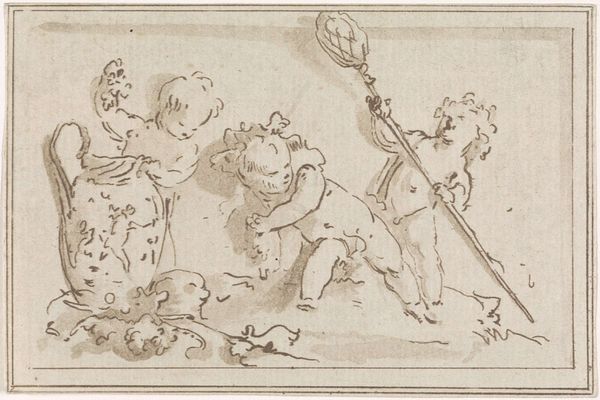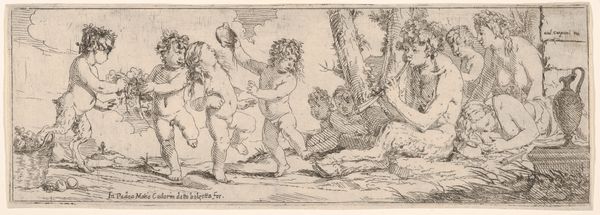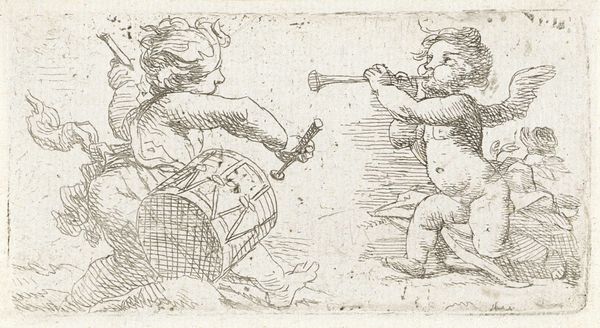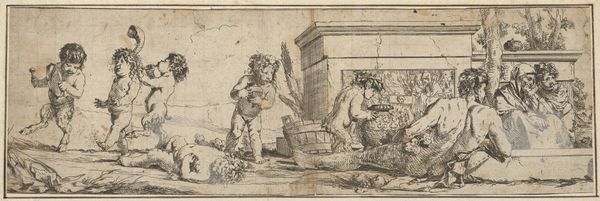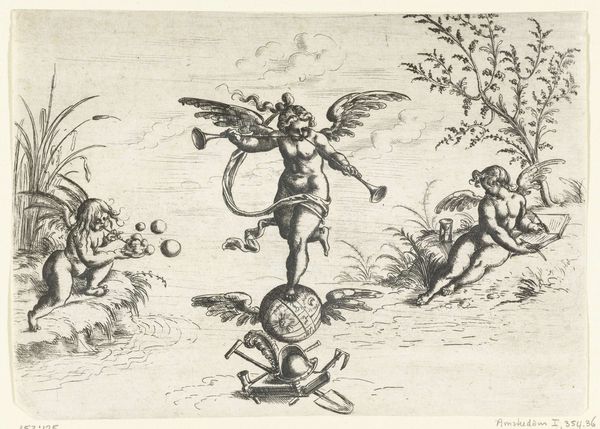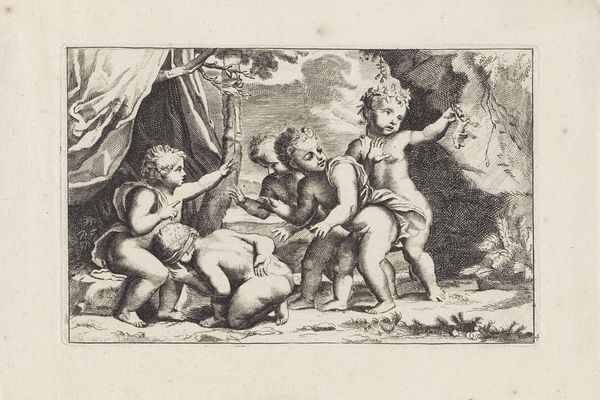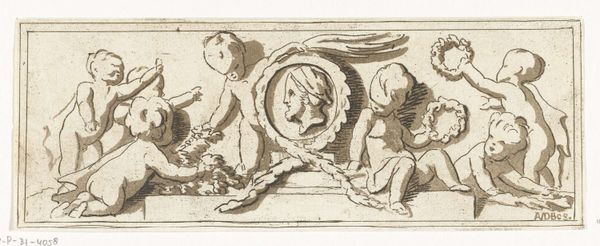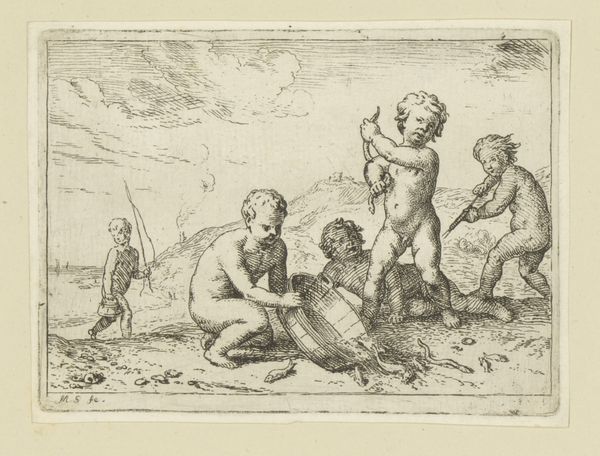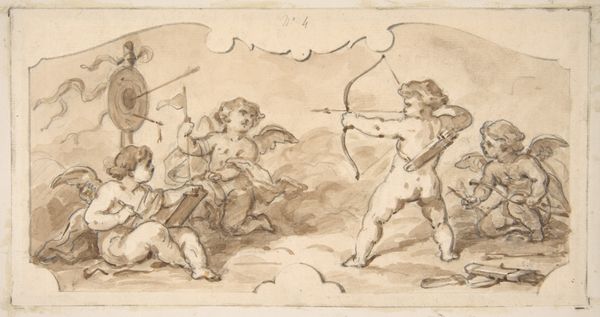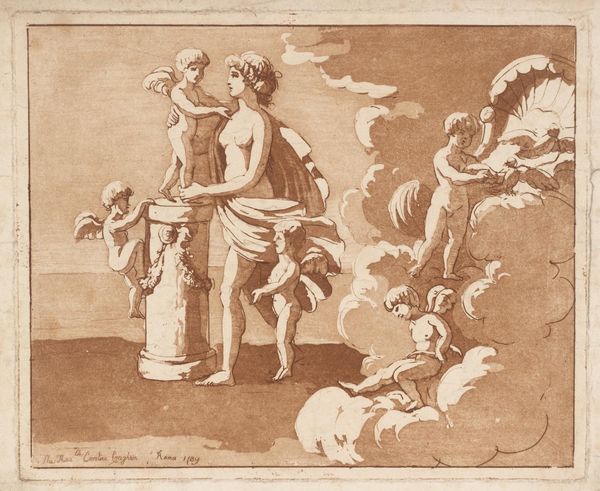
drawing, ink
#
drawing
#
neoclacissism
#
figuration
#
ink
#
genre-painting
Dimensions: height 80 mm, width 120 mm
Copyright: Rijks Museum: Open Domain
Editor: This is "Three Putti by a Vase," a pen and ink drawing by Jacob Ernst Marcus, likely made between 1784 and 1826. There's a really playful energy to it, almost chaotic, which I wasn't expecting from something neoclassical. What do you make of this scene? Curator: It's a whirlwind of cherubic activity, isn’t it? To me, the seeming chaos *is* the point, darling. Think of the 18th century and its fascination with recreating antiquity; but doing so through the lens of newfound freedoms! Marcus, here, captures a sense of unbound energy and uninhibited playfulness that runs absolutely contrary to the stiff, moralising art that was *de rigueur*! Note the confident, sweeping strokes, seemingly dashed off. Don’t you find something modern in the approach? Editor: Definitely. It feels much more dynamic and expressive than I typically associate with neoclassicism. That vase, though, is very classical isn't it? Curator: It is indeed! The vase, the *putti* themselves – they're nods to classical ideals. But look at their antics! They’re clambering, they’re poking... this isn’t some stuffy, allegorical scene; it is as though Marcus wanted to capture fleeting moments, and their sense of mischievous exploration! Now, notice how the light dances across their little bodies. Editor: It gives them a real sense of weight and volume, despite the simple lines. Curator: Exactly! The ink wash creates depth and texture that belies the limited colour palette. Jacob manages to convey emotion, a playful exuberance, using so few tools. Perhaps even mocking more labored work from his peers. Editor: That's so interesting. I guess I came in with a preconceived notion of neoclassicism being stiff and serious, but this drawing completely challenges that! Curator: Isn't it wonderful when a piece throws a wrench into our expectations? The real magic happens when we embrace those surprises, allowing ourselves to see beyond labels and find the genuine expression within the art, even – especially – when that playfulness speaks of an unbound freedom!
Comments
No comments
Be the first to comment and join the conversation on the ultimate creative platform.
